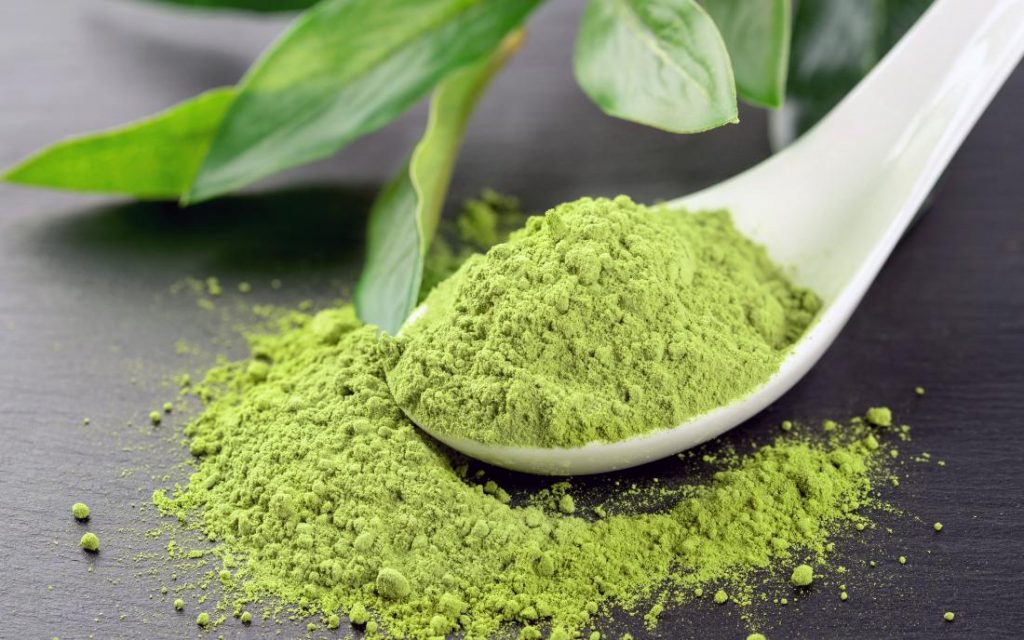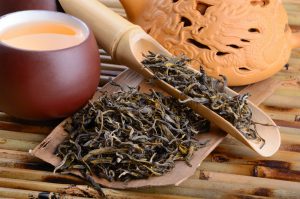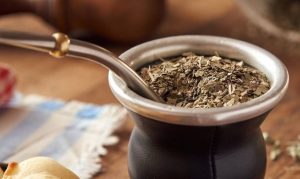
The more popular matcha tea becomes, the more contradictory information about it there is on the Internet. Which of them is true and which is a marketing ploy, we are going to try to find out together with our expert Vitaly Romanov, founder of ORIGAMI TEA. The company was one of the first to introduce fashionable Japanese tea varieties to the Russian market and has been promoting Japanese tea culture in our country for more than 5 years.
The history of matcha tea
Those who buy matcha know that the highest quality powdered teas are made in Japan. But this was not always the case. The invention of the special technique of grinding tea leaves into powder dates back to the 9th century AD. China. Many hundreds of years ago, Chinese tea masters invented hand-grinding green tea leaves into powder and packing them into briquettes. This was done to facilitate storage and transport of the tea leaves from the farms to the customers. After all, pressed tea takes up much less space than a bulky dried leaf.
The history of the origin of matcha tea is so old that it dates back to Tang Dynasty China (618-907). At that time, it was invented to grind the raw material of tea into a fine powder and drink it with salt and mint.
Several centuries later, millstones were invented, thanks to which the grinding process went from being used for briquetting on individual tea estates to being widely used throughout China. After that, it became much easier to buy matcha. For a long time, the idea of ground green tea stayed in China and did not spread beyond its borders. The spread of tea only began during China’s Song dynasty (960-1279).
How did Mateya tea come to Japan? In the 14th century, the Chinese school of Zen Buddhism decided to spread the light of its young teachings to neighbouring countries. Naturally, the monks took their equipment with them on these journeys. Matcha tea also found its way into pilgrims’ bags. Drinking matcha tea became a distinctive art similar to Buddhist meditation, which ensured its enduring popularity. Matcha has acquired its own ritual traditions and instruments, such as ceramic Chavan bowls, whose shape is ideal for mixing the powder with water using a bamboo Chasen whisk.
The fact that Buddhist monks drank tea regularly gives us a clue: the drink maintained the monks’ bodies and made their health excellent. After all, they were obliged to keep their spirits awake and their minds clear during long days of meditation. It was then that Japanese tea acquired its inexpressively romantic image. Drinking matcha became a ceremonial act aimed at contemplating beauty, reflecting on existence, harmony and the nature of man and the world around him. And in this ceremony it was matcha tea that was brewed.
What is matcha tea made of and how is it made?
At first glance, everything is simple: matcha is green tea ground into a fine powder. However, not every sencha is capable of being a matcha tea. As we have repeatedly mentioned, virtually all teas (green, red, puerh, oolong…) are produced from the same plant: camellia sinensis. The only differences are the growing conditions and fermentation methods.
The Japanese try to hide their plantations completely or partially in the shade. They cover them with thick bamboo canopies or tarpaulins a few weeks before harvest, which prevents the shoots from receiving almost 90% of the sunlight. As a result, chlorophyll production increases, the leaves have a higher amino acid content and the final product has a slightly sweet, buttery taste.
Harvesting
The tea bushes, whose leaves are later used to make matcha powder, are darkened 3 weeks before harvesting. There is no point in keeping it longer, as it will not make the unique taste any richer. The soft emerald green leaves are harvested and sent for primary processing.
Only the top leaves from the spring harvest are good for drinking, but for culinary varieties, any leaves, especially from the autumn. Harvesting is done by hand (this type of matcha is considered elite, which influences the price), or with the help of special harvesters: a machine cuts the young leaves, which under air pressure fall into a wide bag.
Processing
- At the factory, the harvested leaves are steamed for one minute to stop fermentation, leaving them bright green and fragrant.
- They are then placed in special machines with air turbines to separate the clumped leaves and remove excess moisture.
- The raw material is then sent on a conveyor belt to the kiln for heat treatment with varying degrees of intensity.
- In the final stage, the tea is ground into powder, which ends up on shop shelves around the world under the familiar name of “matcha”.
Benefits of
Japanese matcha tea holds a record for healthful substances: it contains some 300 ingredients. The Japanese claim that 1 cup of matcha replaces 10 cups of normal tea.
Because matcha is a powder mixed with hot water, it contains more health substances than you get when you brew green tea or boil it in a kettle. Basically, the whole infusion is “eaten”, along with vitamins, minerals, antioxidants and amino acids.
This is by no means a complete list of the benefits you get from a cup of matcha tea:
- antioxidants – catechins, including the powerful epigallocatechin gallate (one cup of matcha has 137 times more than a similar serving of green tea);
- amino acids – asparagic acid, L-theanine and others;
- caffeine;
- vitamins C, E, B1, B2, B6, A, PP, etc;
- micronutrients – iron, calcium, potassium, magnesium, fluorine, phosphorus, zinc, iodine;
- fibre.
You may also like:


